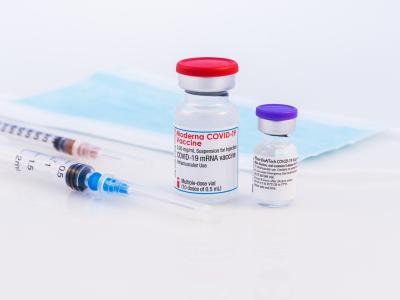Feb 14, 2002 (CIDRAP News) A new study of the risk of Listeria contamination of deli meats indicates that safety measures such as post-packaging pasteurization would yield "dramatic" public health benefits, according to the US Department of Agriculture (USDA).
The USDA's Food Safety and Inspection Service (FSIS) today released the "Draft FSIS Risk Assessment for Listeria in Ready-to-Eat Meat and Poultry Products." The report, a year in the making, is a scientific study of the effectiveness of various testing, cleaning, and other safety measures in limiting Listeria monocytogenes contamination in ready-to-eat meat and poultry products.
FSIS said it will use the risk assessment in working on regulations and other steps to reduce L monocytogenes in processing plants. "By allowing us to evaluate factors that potentially contribute to the overall risk to public health, this risk assessment will give FSIS scientific confidence that new policies will be effective as we move toward rulemaking," Elsa A. Murano, USDA undersecretary for food safety, stated in a news release.
The report's authors used published studies and meat industry data to develop a model to assess the risk of Listeria contamination in meat plants and to predict the effectiveness of safety measures. The measures included testing and sanitation of food-contact surfaces and treatment of products with pasteurization or growth inhibitors either before or after packaging.
"Through use of the model, FSIS discovered that a combination of testing, sanitation and interventions yielded greater benefits than any one strategy alone," the agency statement said. "The risk assessment also demonstrated that the use of intervention steps, such as post-packaging pasteurization or the introduction of growth inhibitors, showed dramatic public health benefits."
As announced previously, the FSIS will present the risk assessment at a public meeting Feb 26 in Washington, DC. The meeting is scheduled for 9 a.m. to 4:30 p.m. at the Washington Plaza Hotel, 10 Thomas Circle NW.
The 34-page risk assessment is a technical examination of such matters as the frequency of contamination in processing plants, the duration of contamination episodes, the proportion of Listeria organisms that are transferred from surfaces to products, and the ratio of L monocytogenes to all Listeria species.
Findings listed at the end of the report include the following:
- The presence of Listeria species on food-contact surfaces greatly increases the likelihood of L monocytogenes in products.
- A "contamination event" in a processing plant generally lasts about a week.
- "Minimal frequency" testing and cleaning of food-contact surfaces, as provided in a Listeria rule the FSIS proposed in February 2001, yields a "small reduction" in L monocytogenes contamination on deli meats in stores. More frequent testing and sanitation of surfaces produce a "proportionally lower risk of listeriosis."
- Combinations of safety measures, such as testing and sanitation, pre- and post-packaging interventions, and growth inhibitors, seem much more effective than any single measure in limiting Listeria contamination and related health risks.
Plants that produce deli meat are not currently required to test either food-contact surfaces or finished products for Listeria. In February 2001, the FSIS proposed to require that plants either test food-contact surfaces or else adopt specific measures to control Listeria. Public comments indicated a need for a stronger scientific basis for the proposed rule, according to the risk assessment. The assessment was conducted because the relationship between Listeria in processing plants and L monocytogenes in deli meats was not well understood, the report states.
See also:
FSIS news release
http://www.fsis.usda.gov/oa/news/2003/draftlmra.htm
Full text of the Listeria risk assessment
http://www.fsis.usda.gov/OPHS/lmrisk/DraftLm22603.pdf


















